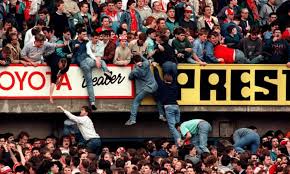Understanding the Hillsborough Disaster and Its Impact

The Importance of the Hillsborough Disaster
The Hillsborough Disaster, which occurred on 15 April 1989, remains one of the most tragic events in the history of British sports. The disaster resulted in the deaths of 96 Liverpool FC fans during an FA Cup semi-final match against Nottingham Forest at Hillsborough Stadium in Sheffield. Understanding this incident is crucial not only due to its immediate human cost but also because of the long-term implications for stadium safety and sports governance in the UK.
Events Leading Up to the Disaster
On that fateful day, the stadium was overcrowded, leading to a fatal crush in the stands. Poor crowd management, inadequate safety protocols, and the failure of police to control the situation significantly contributed to the tragedy. Eyewitness accounts from survivors reveal the chaos and desperation as people were trapped, and the lack of timely medical assistance further exacerbated the catastrophe.
Aftermath and Inquiries
In the aftermath, the cover-up attempts by police and media portrayal led to a prolonged struggle for justice by the victims’ families. Various inquiries, including the Taylor Report commissioned in 1990, highlighted the failures that contributed to the disaster and resulted in significant changes to football stadium safety, leading to the end of standing terraces in favour of all-seater stadiums in the UK. However, it was not until 2012, after a lengthy campaign, that the Hillsborough Independent Panel released a report clearing the victims of any blame and exposing the failures of police conduct.
Significance and Ongoing Legacy
The Hillsborough Disaster has had a lasting impact on the landscape of sports safety regulations in the UK. It has also become a symbol of the fight for justice, transparency, and accountability. Memorials and tributes to the 96 victims continue to resonate within the football community and beyond, reminding everyone of the importance of safety at public events.
Conclusion
As we reflect on the Hillsborough Disaster, it is vital to comprehend its broader implications on public safety and the ongoing commitment to ensure that no such tragedy occurs again. The event serves as a poignant reminder of the need for vigilance, accountability, and a collective responsibility to protect lives in sports and other public gatherings. Ensuring the memories of those lost are not forgotten fuels ongoing discussions about rights for fans, the role of authorities, and the importance of safety in sporting venues.









